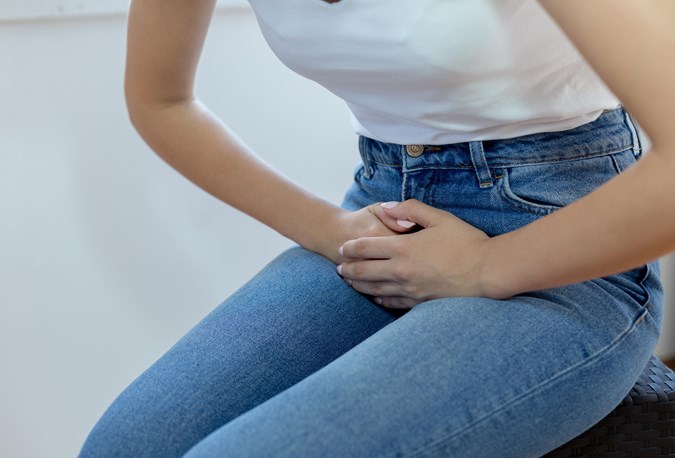7 facts you need to know about endometriosis

Your guide to this common condition by leading Gynaecologist, Dr Raewyn Teirney
By Practical Parenting team
March 29 2019
Endometriosis is a common condition in women where cells similar to those that line the uterus (endometrium) grow in other parts of the body, such as the ovaries, bladder and bowel. It is often painful, and can cause infertility.
Having endometriosis is challenging physically and emotionally but the good news is it can be treated and managed allowing you to have wellbeing and a full quality of life/health. Endometriosis, pronounced end-o-me-tree-oh-sis is a progressive, chronic condition where tissue that is similar to the lining of uterus, known as the endometrium, is found outside the womb.
Most commonly this tissue is found lining organs in the pelvic region such as the ovaries and the fallopian tubes, as well as the bladder and bowel.
Endometriosis can lead to painful inflammation, scarring and cysts and often women can present with common symptoms such as abdominal- pelvic pain, heavy and often painful periods and dark premenstrual bleeding. It can also cause infertility - even mild endometriosis can cause infertility.
Alongside the physical symptoms, sufferers of endometriosis can also have reduced quality of life by having to take days off work, study or school because of the condition, which can also lead to anxiety and depression.
The causes of endometriosis are yet to be fully understood, but it can be treated by medication and or by a surgery. The operation, while not simple, enjoys a reasonable success rate.
With around 10 per cent of women affected by endometriosis, it pays to be ‘Endo Aware’. Here are seven things you should know about endometriosis.

Getty images
1. It is much more common than you think
You’re not alone – around 1 in 10 women of reproductive age are affected by endometriosis. It can start as early as your teenage years and can go undetected for up to a decade before being diagnosed, often when you are trying to have a baby. Consequently, women over 30 who are yet to have a child are often diagnosed for the first time with endometriosis.
2. Causes and family history
The causes of endometriosis are not yet fully understood. However, there are a few theories. The first is retrograde (backward) menstruation where menstrual blood that carries endometrial tissue cells flows back along the fallopian tubes and into the pelvis where the cells can then implant and grow. The second cause could be ‘coelomic metaplasia’ where cells lining the pelvic organs are thought to be able to change structure and function like endometrial cells. Triggers for this could include puberty or oestrogen surges. There is also a theory to do with immunity deficiencies, while there is also a family link, as women who have a close relative with endometriosis are up to seven times more likely to get the conditions.

Getty images
3. Warning signs
The symptoms of endometriosis are many and varied. However, the most common symptoms are heavy period pain that gets worse over the years as the condition progresses. Irregular bleeding or abnormal spotting between periods is also a sign as is abdominal pain, pelvic pain, bladder pain or bowel pain, or pain during and after sex. Changes in urination or bowel movements can also be a warning sign of endometriosis, while infertility or problems falling pregnant are also symptoms in moderate to severe cases.
4. Location, location
Some women suffer many painful symptoms of endometriosis, while others have no symptoms at all. This is because it is often related to the where the endometrial tissue is growing. For instance, endometriosis on the bladder can cause pain during urination, while endo behind the vagina can be the cause of pain during sex. Because it is progressive, there may be moderate symptoms in the early stages of the disease, such as mild pain for a one or two days of your period, but as the condition continues, the symptoms can get more severe and last longer, even occurring before and after your period.

Getty Images
5. Fertility
Endometriosis is a common cause of infertility. In women over 25 years of age, this is thought to be due to the fact that endometrial cells release chemicals that hinder the ability to get pregnant or affect the development of the embryo in its early stages. Moderate to severe endometriosis can disrupt ovulation by distorting the fallopian tubes and ovaries. The development of cysts or scar tissue can also block the egg’s release or affect the transportation of sperm.
6. The good news - you can have a healthy pregnancy and baby!
Endometriosis can usually be treated with medications or surgery. Medications include pain relief medication and hormone-based treatments that reduce oestrogens. However, they work only as long as you take them, so the endometriosis may recur once you stop medications.
The gold standard in both diagnosing and treating endometriosis is surgical procedure called laparoscopic (keyhole) surgery. This a minimally invasive treatment where the surgeon looks inside the abdominal cavity through a small incision in the navel to confirm endometriosis and can then surgically treat it at the same time. In many cases surgery may be the only treatment required to increase natural fertility. It can also increase the success rate of advanced reproductive treatments such as IVF.
7. Lower your risk and know when to get help
There are a few things you can do right now to lessen your chance of getting endometriosis. Alcohol use and low body weight are risk factors, while regular exercise of four hours per week can help lower the risk and also help with some of the symptoms of pain. Of course, if you suspect you have endometriosis you should see your GP immediately. Go to your doctor when your period pain is stopping your normal daily activities such as missing school, study or work, or when you feel your symptoms are getting worse or when you are not coping mentally. Or if you are having trouble getting pregnant go see your GP and get a referral to see a fertility specialist.






